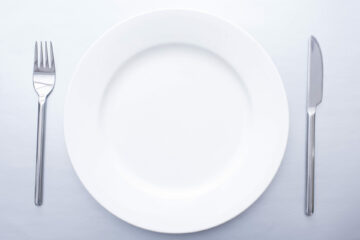In 2013, Germany’s former strongest man Patrik Baboumian, set the world record for the heaviest yoke carry ever lifted by a human, at over half a ton (550.2kg) – a record that remains unbeaten to this day (1). The twist…? He’s vegan.
The idea that protein is only found in animal products permeates our culture and our kitchens, and for many on a vegan diet, the question most frequently asked is “but where do you get your protein?”. Protein is the building block for muscular growth and development, so no protein would mean no strength gains – but Patrik’s successes would beg to differ.
So just how easy is it to build muscle on a vegan diet? Is it any harder, or could there even be advantages to muscle-building and athletic performance by going vegan?
A vegan diet is one which excludes any form of animal product such as milk, eggs, meat and fish and is made up entirely of plants. A well-balanced vegan diet includes plenty of wholegrains and cereals; chickpeas and other pulses; fruit; veg; nuts and seeds. Sounds super healthy, right? That’s because it is!
But with animal protein being so commonly associated with muscle-building, does a lack of this food type affect how vegans build muscle? Let’s look at the basics.
How does protein build muscle?
When we undertake physical training, damage is inflicted to our muscles in the form of micro-tears. These tears are then repaired with amino acids; compounds absorbed through the consumption of protein. Consuming enough protein, containing essential amino acids (those that our bodies cannot make and that we must get from our diet), to repair all the micro-tears, plus a bit extra to enable our muscles to grow even stronger than before, is therefore vital.
Do plants contain protein?
All animals must obtain essential amino acids through their diet. For the biggest herbivores on Earth (think rhinos, most gorillas and the mighty elephants for example), growing to immense size and strength requires the consumption of vast amounts of amino acids, all of which they obtain through eating plants. This is because all amino acids originate from plants (and microbes), and all plant proteins contain a range of the essential amino acids (2). So… yes! Plants do contain protein, as these animals show.
There is a common misconception that as some plant proteins are incomplete (they do not contain all the essential amino acids), we need to combine ‘complementary proteins’ to get the full range and quantities of amino acids. However, this ignores the fact that our bodies have the incredible ability to store pools of free amino acids that it can use to do all the complementing for us, and therefore provide us with the correct proteins our bodies need.
If in doubt, you could combine foods; for example, pairing your rice with beans, in order to make absolutely sure you’re getting all the essential amino acids. Regardless of protein, the more variety of plants you eat, the better!
Can you get enough protein to build muscle on a vegan diet?
An entire movement of vegan athletes, bodybuilders and influencers is emerging on the social media scene, with perfectly honed bodies, improved athletic performance and meticulously crafted #vegan posts. But is the hype to be believed? Well, let’s look at the numbers.
To build muscle, we recommend consuming around 1.6-2 grams (g) of protein per kilogram (kg) of bodyweight, and up to 2.4g of protein per kg of bodyweight for bodybuilders.
As a regular gym-goer, I aim for between 1.6-2g of protein per kg of bodyweight, so my optimal muscle-building protein intake would be approximately 115-150g protein daily. It’s not quite Patrik Baboumian’s whopping 410g protein, but it’s certainly sufficient for my needs! Here’s an example of what I might eat in a day:
Breakfast: 120g plain porridge oats, 200ml soy milk, 1 banana, 50g mixed nuts, 2Tbsp ground flaxseeds. Total protein: 40g
Lunch: 240g chickpeas in a curry with 200g quinoa, 100g peas and 2 Tbsp pumpkin seeds. Total protein: 35g
Snack: Peanut butter (50g) on 2 seeded toast. Total protein: 25g
Dinner: 120g Tempeh stir fried with wholewheat noodles and and a handful of cashew nuts. Total protein: 45g
That’s a total of 145g protein, almost the maximum protein I’d want to consume. If I wanted to increase this for any reason, I could throw in a vegan protein shake or add more chickpeas/tempeh.
As we can see, getting enough protein on a vegan diet is surprisingly easy (and tasty!). As long as some kind of pulse (e.g. chickpeas), a soy-derived product such as tofu or tempeh and/or nuts and seeds are included with each meal, consuming enough protein to build muscle should not be an issue.
Are there any advantages to building muscle on a vegan diet?
Along with providing sufficient protein for muscle growth, a well-balanced vegan diet has a host of other benefits which may increase athletic performance, aesthetic goals and overall health. Certain plants are particularly high in nitrates (e.g. beetroot, spinach and carrots), which are thought to help our muscles contract more efficiently, therefore increasing resistance training output (5, 6). Nitrates also encourage our blood vessels to open, allowing for better transport of nutrients to our various organs and muscles (7). Many plants are also extremely high in antioxidants (on average, 64 times the amount found in animal foods (8)) – compounds with potent anti-inflammatory properties. Because of these, a number of studies have shown certain plant foods can help decrease soreness, reduce muscle damage, and support recovery – so that you’re ready to train again, sooner (9).
The growing number of athletes, bodybuilders and influencers who are turning to veganism is a sure sign that building muscle on a vegan diet is not only possible, but perhaps even preferable. Given the many long-term benefits of a healthy, balanced vegan diet, what’s not to love?!
If you have any questions regarding plant-based diets, feel free to contact one of our plant-based dietitian.
By Richard Trevor, revised by Reema Patel, registered dietitian and vegan nutritionist.
References
- Guinness World Records Heaviest yoke carry travelling 10 m. Available at: https://www.guinnessworldrecords.com/world-records/110923-heaviest-yoke-carry-travelling-10-m (Accessed: 07/11/2022).
- Ramarao P B, Norton H W, Johnson B C. (1964) ‘The Amino Acids Composition and Nutritive Value of Proteins. V. Amino Acid Requirements as a Pattern for Protein Evaluation. J Nutr. 82(1), pp. 88-92
- McDougall J. (2002) Plant Foods Have a Complete Amino Acid Composition. Available at: https://www.ahajournals.org/doi/full/10.1161/01.CIR.0000018905.97677.1F (Accessed: 07/11/2022).
- Rose W. (1957) ‘The amino acid requirement of adult man’ Nutr Abst Rev. 27, pp. 631–647
- Mosher S L et al. (2016) ‘Ingestion of a Nitric Oxide Enhancing Supplement Improves Resistance Exercise Performance’ 30(12), pp. 3520-3524. Doi: 10.1519/JSC.0000000000001437
- Dominguez et al. (2018) ‘Effects of beetroot juice supplementation on intermittent high-intensity exercise efforts’ 15(01), p. 2. Doi: 10.1186/s12970-017-0204-9
- Dominguez et al. (2017) ‘Effects of Beetroot Juice Supplementation on Cardiorespiratory Endurance in Athletes. A Systematic Review’ 9(1) p. 43. Doi: 10.3390/nu9010043
- Carlsen M H et al. (2010) ‘The total antioxidant content of more than 3100 foods, beverages, spices, herbs and supplements used worldwide’ Nutrition Journal 9(3).
- McLeavy Y et al. (2012) ‘Effect of New Zealand blueberry consumption on recovery from eccentric exercise-induced muscle damage’ Journal of the International Society of Sports Nutrition 9(19).







